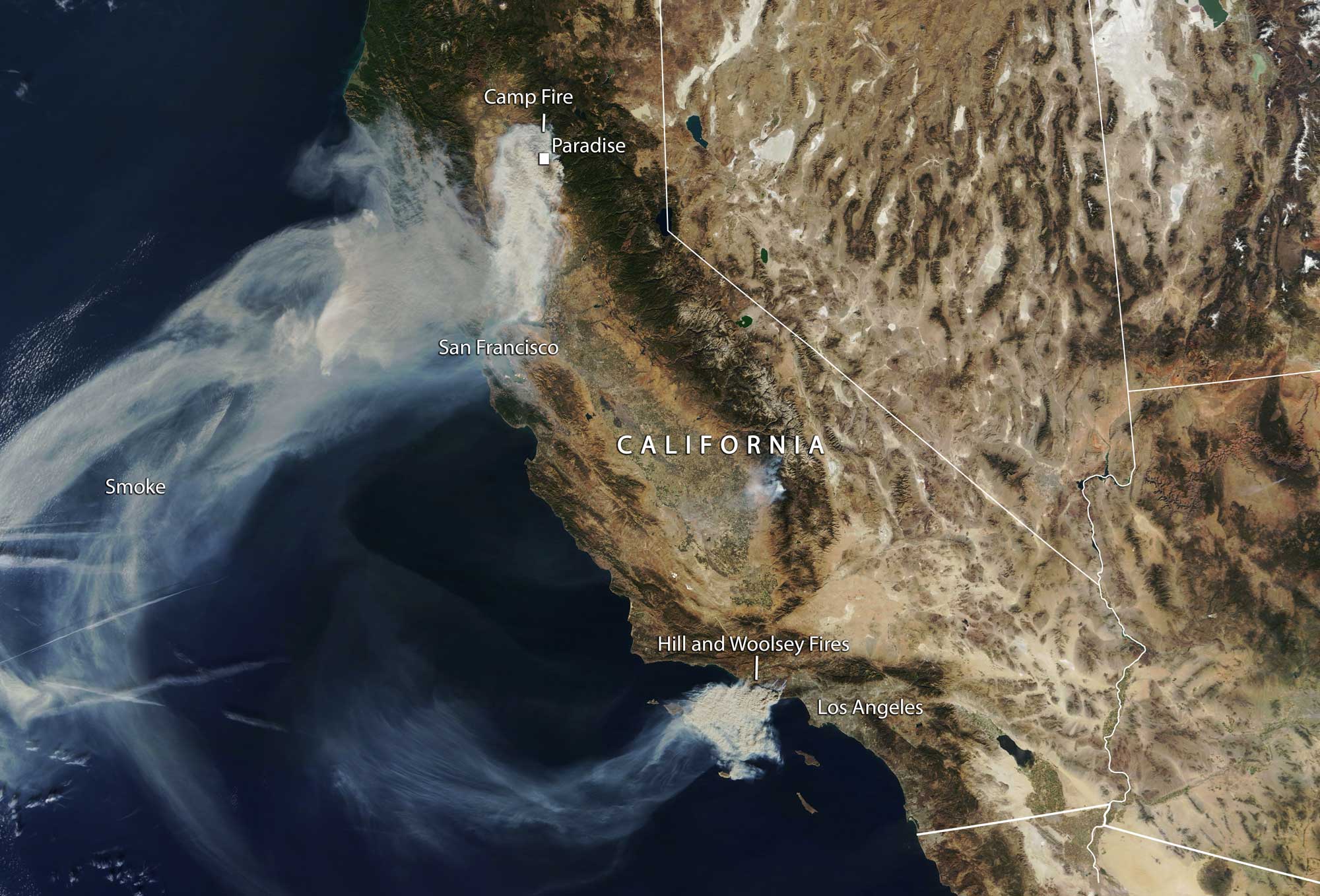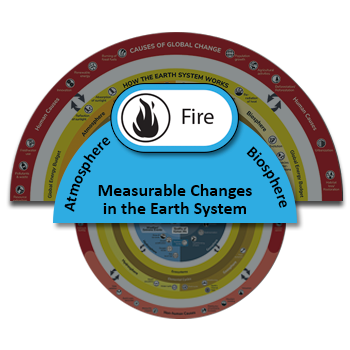The word fire typically refers to the rapid reaction of organic materials (biomass) with oxygen (O2) that produces heat, light, carbon dioxide, and water, as well as releasing other chemicals and particles into the air. This process is also known as combustion. In the context of global change, the most important type of fire is wildfires. Wildfires not started by humans are usually ignited from lightning strikes, or rarely by volcanic eruptions. Wildfires are an essential aspect of many ecosystems, shaping communities of plants and animals over time. In some parts of the world, the majority of wildfires are started by humans, often to remove trees and clear land for agricultural activities.
Accidentally or deliberately lit fires are also common in areas with dry forests, especially those in Mediterranean habitats, and usually pose a threat to people and their property. Wildfire management practices that support ecosystems and protect human communities are areas of active development and scientific research.

Smoke visible from space created by wildfires in California in the fall of 2018. Credit: NASA Earth Observatory
The frequency and intensity of fires can be influenced by a variety of Earth system factors, including:
- The amount of biomass available to fuel fires. Dry biomass, such as trees that have died due to drought and/or disease, can increase the extent and severity of wildfires.
- Precipitation patterns that result in dry seasons making areas more susceptible to fires.
- Winds from regional atmospheric circulation patterns can spread flames and transport embers miles from the fire perimeter, igniting additional fires. The heat from large fires can, in turn, affect wind patterns.
- The shape and features of the landscape (topography). For example, fires usually burn more rapidly uphill than downhill because the flames heat and dry the fuel on the slope above the fire. Additionally, valleys and canyons can funnel air, increasing wind speed and rapidly spreading flames.
- Activities that cause global warming, such as the burning of fossil fuels, agricultural activities, and deforestation. Increasing average temperatures have altered temperature and precipitation patterns, and decreased snow and ice cover, resulting in dryer, longer annual fire seasons.
Fire affects the Earth system in variety of ways, including:
- Releasing carbon from biomass, in the form of carbon dioxide (a greenhouse gas), into the atmosphere.
- The evolution of plant life cycles and traits, such as thick bark and seeds that germinate after fires, helping species survive wildfire events.
- Affecting regional biomass and species populations, which affects how species interact with each other.
- Reducing biomass and ground cover, which can increase weathering and erosion of rocks and soil, and cause landslides.
- Decreasing water quality by introducing ash, debris, eroded sediment, and potentially chemicals from retardants used to fight fires into groundwater, streams, and lakes.
- Where people can live and recreate.
Can you think of additional cause and effect relationships between fire and other parts of the Earth system?
Visit the productivity and biomass, atmospheric circulation, and displacement of human populations pages to learn more about how phenomena related to fire are connected to other global changes.
